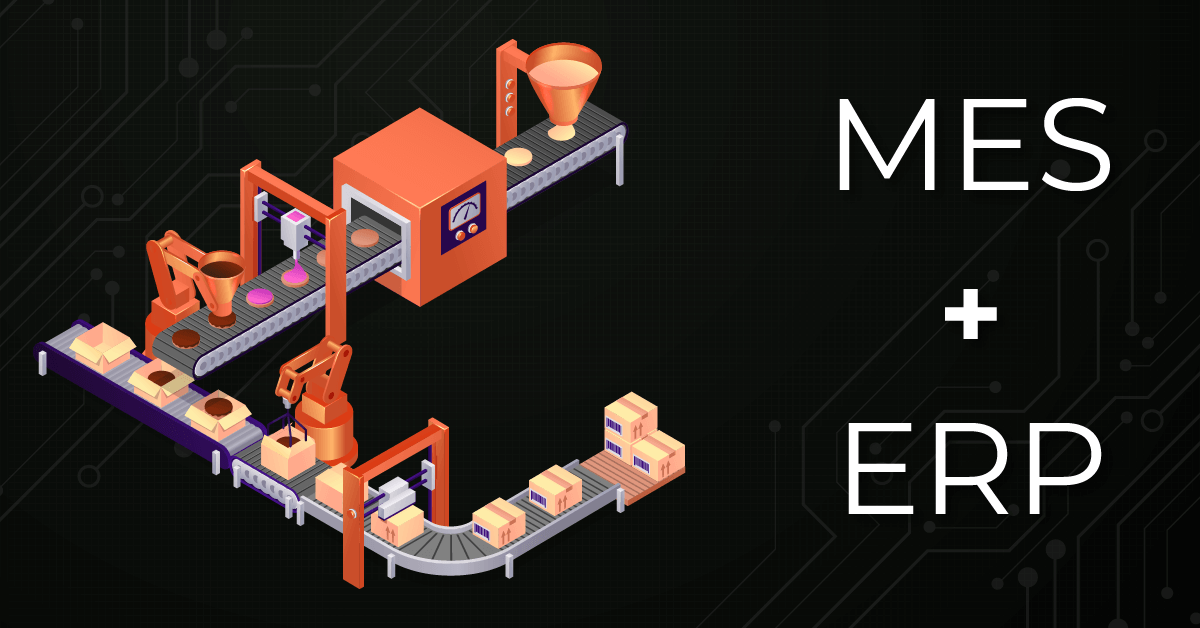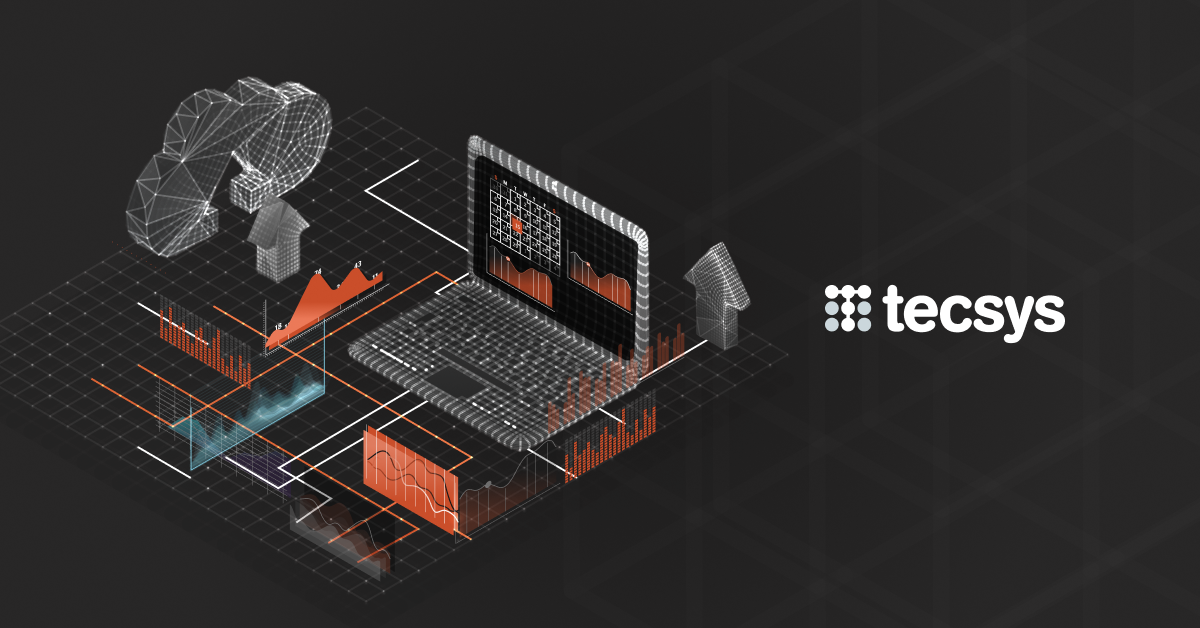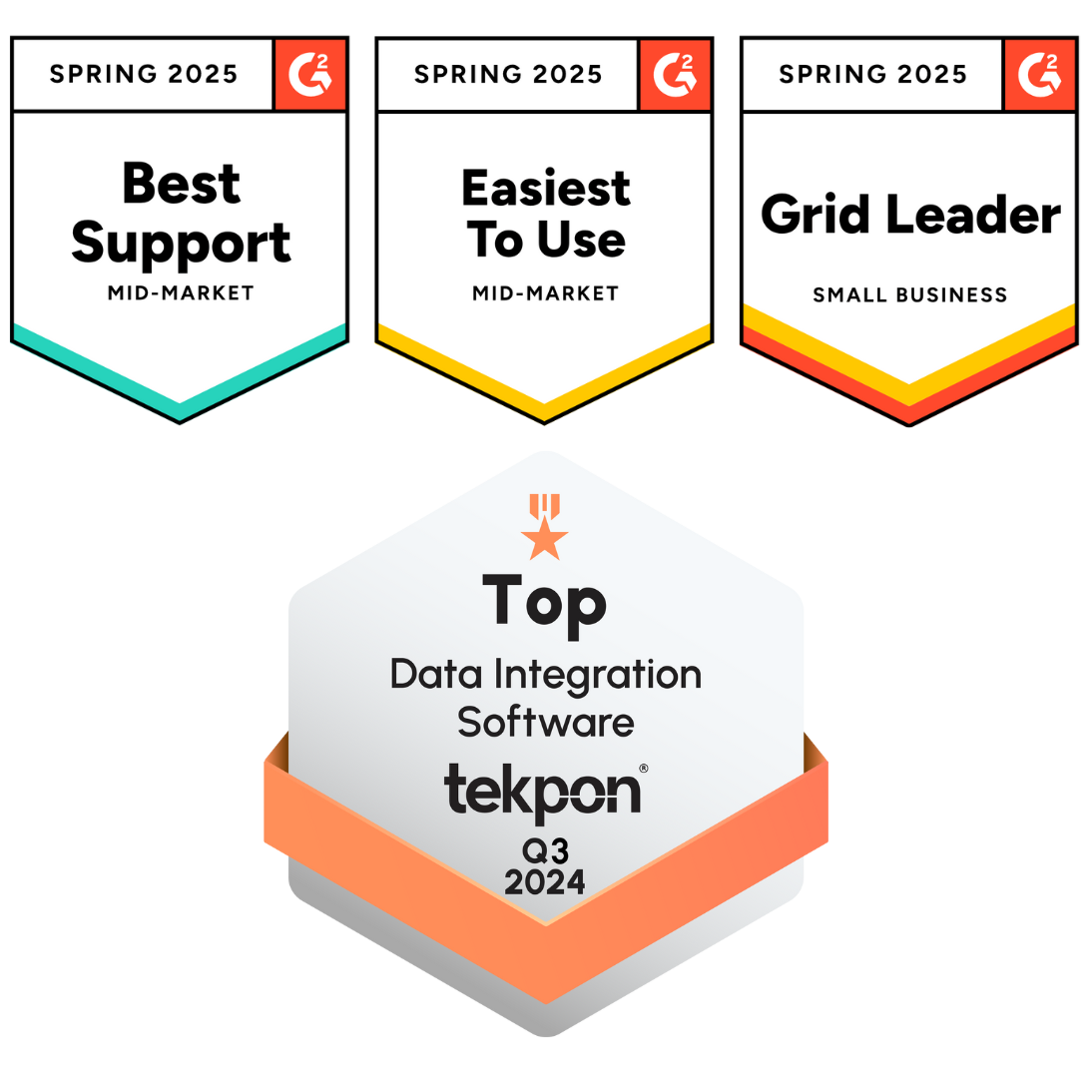Enterprise resource planning (ERP) and manufacturing execution systems (MES) are at the forefront of the sophisticated software solutions manufacturers rely on to manage their operations.
ERP systems act as an organization’s skeletal structure, uniting various business activities such as finances, inventory management, procurement, and human resources management.
On the other hand, manufacturing execution systems (MES) are concentrated solely on the production stage. It follows and monitors the manufacturing process in real-time, ensuring the best possible usage of available resources, reducing downtime as much as possible, and increasing total productivity.
What is ERP – MES Integration?
Integrating your ERP and MES allows key types of data to flow from one system to another. This ensures that data on both systems stays up-to-date, so that teams can continue to use their preferred system. It also removes the costly need to manually update systems.
How To Integrate your ERP & MES Systems
1. Custom API Integration
To enable inter-system communication, developers often create unique Application Programming Interfaces (APIs). A manufacturing organization, for instance, may create APIs to integrate its enterprise resource planning (ERP) software with specialist production monitoring software.
Advantages:
- Adapted to meet individual needs of a company, allowing for easy implementation.
- It gives you complete command over your data and how it’s used.
Disadvantages:
- It needs a lot of work and skill to develop.
- Difficulties in upkeep occur when APIs require alterations or upgrades.
2. Middleware Integration
Integrating middleware means utilizing software such as iPaaS to link together otherwise incompatible infrastructures. Using middleware, an online retailer can coordinate the flow of information among its many systems, including its storefront, inventory management, and customer relationship management (CRM).
Advantages:
- Reduces the complexity of integration by mediating between various programs.
- Facilitates the linking of disparate corporate systems and data sources.
Disadvantages:
- There will be more time and money invested because finding the right middleware software is key.
- Middleware upgrades and support are dependent on third-party providers.
Related: The Top 30 Data Integration Platforms
3. Using Connectors
Whether built-on or third party, connectors offer a means for businesses to connect the two systems for more basic use. For instance, an online store’s payment gateway can be connected straight to the enterprise resource planning system for basic data flow.
Advantages:
- Ease of configuration and installation for targeted integration.
- Rapid sharing of information amongst the various systems.
Disadvantages:
- Problems with scalability arise when integrating new systems because this adds yet another system or complex data modification.
- Long-term upkeep is challenging, especially when there are several connectors involved.
Depending on the selected method, you can even determine the frequency of updates between the ERP and MES.
Batch Integration
The term “batch integration” refers to the practice of aggregating and processing data collected over a period of time. A manufacturing firm, for instance, would keep track of production data throughout the day, then upload it to an enterprise resource planning (ERP) database at the conclusion of the shift.
Advantages:
- Saves time and energy by processing data in large batches.
- Eases the load on ultra-fast computers.
Disadvantages:
- Avoid using for tasks that must react instantly to real-time information.
- There could be data loss if the system crashes before the batch is processed.
Dynamic/Real-time Sync
In real-time integration, systems are constantly talking to one another and taking instantaneous action based on the data they receive. As soon as a purchase is made, for instance, a store’s inventory can be updated anywhere it is available.
Advantages:
- Allows for prompt choice making in light of current data.
- Perfect for organizations whose operations mirror that description.
Disadvantages:
- Heavy on resources, this one needs a solid digital backbone.
- Difficult to put into action, especially on a broad scale.
Related read: ERP WMS Integration Explained
Benefits of ERP and MES Integration
Real-time Data Synchronization:
Integration makes it possible for ERP and MES systems to share real-time data, which enables real-time data synchronization. Integration of ERP software and MES brings varied business processes into harmony and ensures that data can flow without interruption from the order stage to the production line.
Because of this synchronization, producers are provided with up-to-the-minute insights into the production processes, which enables them to make educated decisions.
Improved Visibility
As a result of the integration, a comprehensive perspective of the full manufacturing lifecycle is made available. Stakeholders receive unprecedented visibility into the whole order fulfillment process, from the time an order is placed through manufacturing and delivery, which enables them to quickly detect bottlenecks and inefficiencies.
ERP systems are responsible for the generation of work orders based on real-time demand data, while MES systems are responsible for ensuring that these work orders are efficiently executed on the shop floor.
Enhanced Quality Management
Integrated systems make it easier for firms to collect and analyze historical data, which enables the identification of patterns and trends in their production operations. By enabling companies to proactively address potential quality concerns, this data-driven strategy improves quality management.
As a result, this technique ensures that customers receive products that are of high quality.
Significant Reduction in Human Error
The reliance on manual operations is reduced thanks to automation and the execution of real-time data, which also lowers the danger of errors caused by humans.
Correct decision-making relies on timely and reliable data collection from production units and work centers. Accurate data input and analysis can increase the trustworthiness of the information overall, which in turn leads to more informed decision-making.
Real-Time Data Visibility
Integration offers insights into production processes that are updated in real-time, allowing decision-makers to watch operations as they occur. Increased productivity is a direct result of this visibility’s ability to facilitate the rapid detection and resolution of problems.
It keeps track of work orders, checks cycle times, and offers real-time reports on the production line’s efficiency.
Improved Accuracy
Integration increases data accuracy by doing away with the need for manual data entry and lowering the risk of making mistakes due to human error. Manufacturers can achieve a more holistic understanding of their production process if they combine the data from their serialization systems with the product codes.
This level of precision is essential for ensuring adequate stock levels, preserving product quality, and accurately predicting customer demands.
Enhanced Supply Chain Management
The integration of ERP with MES provides a comprehensive picture of the supply chain, from raw materials to finished products. This allows for more efficient management of the supply chain.
This visibility throughout the entire process enables more accurate demand forecasting, more effective inventory management, and timely order fulfillment, all of which contribute to effectively meeting client requests.
Optimized Production Planning
Integrated systems make dynamic production planning possible, which leads to optimized production planning. When connected with ERP, MES software provides essential insights into the operations taking place on the shop floor.
The ability of manufacturers to quickly alter production schedules in response to shifting market demands, effectively allocate resources, and reduce waste helps manufacturers keep costs and waste to a minimum.
Challenges for ERP and MES Integration
While integrating ERP and MES can have significant positive effects on a company, it also presents several obstacles that must be dealt with. The following are some challenges to watch out for:
Disparate Systems and Data Formats
Data formats, structures, and communication protocols vary depending on the vendor. Aligning the various data formats across the production facility and structures used by ERP and MES systems is a major challenge for ERP. ERP and MES systems frequently originate from multiple vendors.
To achieve faultless communication between these disparate systems, careful mapping and data processing are required throughout the integration.
Complexity of Manufacturing Processes
Manufacturing procedures are complex and may vary widely from one industry to the next and even within a single company.
Because of the unique needs of each business, ERP software integration with preexisting systems in manufacturing operations can be challenging.
Compliance and Data Security
When systems are integrated, critical company data is consolidated. The security of sensitive information is of the utmost importance, especially in light of compliance rules and data protection legislation.
Data breaches, hacking attempts, and other forms of cyber-crime present a serious challenge to any organization.
Resistance to Change
Employees may be resistant to change because they are comfortable with the status quo. Resistance from the workforce is a common barrier to user adoption when transitioning to an integrated solution. Employees’ resistance to change might harm integration and productivity.
Lack of Skilled Personnel
Due to a lack of qualified employees, integrated ERP and MES systems have been slow to be implemented and managed.
Especially for smaller and medium-sized businesses, finding and keeping such expertise can be a challenge.
Costs and Budget constraints
Integrating ERP and MES systems can be expensive. It might be difficult for small and medium-sized organizations to purchase high-quality integration solutions due to budget constraints. The associated costs frequently have a significant influence on the decision-making process.
Scalability
Ability to adapt to the changing and growing needs of a firm as it expands. Growing data, user, and transaction loads necessitate integrated systems that can scale. If the integrated solution is not built to scale with the business, scalability difficulties may occur.
Customization Requirements
Inefficiencies might arise when tools and business models aren’t a good fit for one another. Every manufacturing plant is different, which frequently calls for specialized integration solutions. The ability to customize something requires in-depth knowledge of both ERP and MES systems.
Data Accuracy and Duplication
Integrating data from different sources might cause problems with data duplication and accuracy. Having inaccurate or duplicate data might jeopardize decision-making processes and reduce the integrated system’s efficiency.
Dependency on Vendor Support
Vendors typically offer support and upgrades, and businesses heavily rely on them. The maintenance of the integrated system’s functioning and security may be a challenge if a vendor stops supporting a certain module or version.
Interoperability with Third-Party Applications
Businesses frequently make use of specialized third-party apps; thus, their systems must be able to communicate with those programs. When these apps lack standardized interfaces or APIs, ERP integration and MES integration become more complex.
Read more: ERP Integration Challenges Explained
Best Practices for ERP and MES Successful Integration
1. Clear Communication
IT teams, ERP vendors, and MES solution providers need to have effective communication with one another. The integration goals can only be properly achieved through good collaboration and clear communication, which both ensure that everyone knows the aims.
2. Standardization
Adopting international standards for data formats and communication protocols makes the integration process simpler. ERP and MES systems can communicate data more efficiently when they are standardized to work together.
3. Thorough System Analysis
You should carry out an in-depth investigation of both the ERP and the MES systems. Acquire a thorough understanding of their data models, functionality, and integration capabilities. A powerful approach to effective integration will have this analysis as its base.
4. Data Mapping and Transformation
Invest some effort in precisely mapping the data fields before beginning the data transformation process. Implementing data transformation techniques allows for the conversion of data formats, which helps to ensure that different systems are compatible with one another.
5. Utilize Middleware
Middleware solutions serve as intermediates between enterprise resource planning (ERP) systems and manufacturing execution systems (MES). They do this by controlling communication protocols, data transformations, and error handling, which makes integration much simpler.
6. Implement Robust Security Measures
Encryption, authentication methods, and access control based on roles are some of the most important security features that should be implemented. To maintain the integrity of the integrated environment, routine security inspections, and updates need to be carried out.
7. Continuous Monitoring and Maintenance
After the system has been integrated, you should set up a reliable monitoring system. Monitor the flow of data, the performance of the system, and user interactions regularly.
Take immediate action to resolve any problems that may arise, and execute regular maintenance on the system to maintain uninterrupted business operations.
Why High-Growth Distributors Choose DCKAP Integrator
The DCKAP Integrator is a distributor-preferred integration tool for good reason: it is built specifically for their needs. This includes integrating easily with some of the top solutions preferred by them across verticals including HVAC, electrical, plumbing, jan-san and more.
The DCKAP Integrator unites critical business solutions such as ERP, CRM, PIM and warehouse management systems. It automates manual operations to boost output. It aids smart decision-making by providing a complete picture of production floor functions.
For instance, real-time production execution systems allow industrial organizations to closely monitor operations and respond quickly to issues and opportunities.
The DCKAP Integrator streamlines production, harmonizes business applications, and helps companies adapt to digital systems. The thorough focus on the manufacturing process helps industrial organizations stay ahead in the ever-changing landscape of modern industry.
The Final Word
A fundamental shift in the effectiveness of manufacturing takes place as a result of the combination of ERP and MES systems. The power of seamless integration may be unlocked for manufacturers by overcoming obstacles through careful planning, precise data mapping, strategic alignment of digital tools, and severe safety precautions.
The integration of ERP and MES systems is a game-changing move for manufacturing organizations that want to increase operational efficiency, strengthen quality management, and better meet customer demands and customer service.
As a consequence, the process is streamlined, visibility is increased, and adaptability is taken to an entirely new level, all of which position manufacturers at the forefront of their respective industries.
Talk to our integration experts to match your requirements to the right solution for you.





